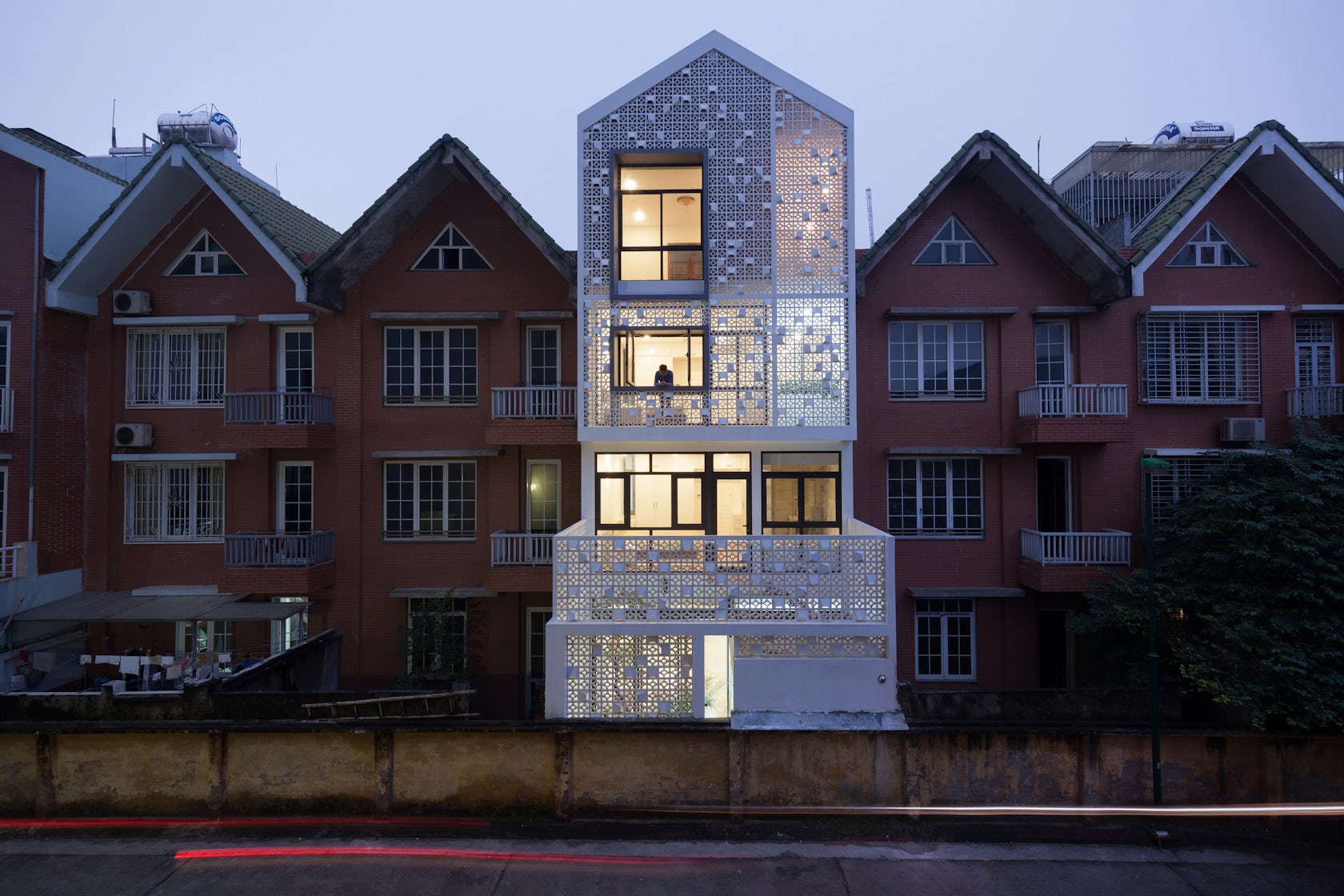Architects: Want to have your project featured? Showcase your work through Architizer and sign up for our inspirational newsletters.
The following projects illuminate the many ways that decorative screens are used in various architectural traditions throughout the world. Although screen façades are nothing new, when incorporated into contemporary architecture, they can offer radical responses to modern design philosophies. In many ways, ornamental screens defy the categorizations and false dichotomies that guide modern architectural practice. Although these screens are decorative, they are also functional, often providing privacy, ventilation and natural light. These screens obscure distinctions between inside and out, while their decorative patterns oscillate between organic and geometric design.
Screen façades also serve a symbolic function, by imitating traditional designs and in some cases by reinvigorating preexisting structures. In each of these projects, the ornamental façades create a stark contrast to the austere minimalism of their architectural surroundings. The screens introduce a historicizing element to otherwise abstracted forms, providing structures with a strong visual identity and a necessary balance of past and present. Some screens integrate new buildings with a traditional environment, while others adapt old buildings to contemporary programs.

© MAHASTUDIO

© MAHASTUDIO
Masjid Permata Qolbu, MAHASTUDIO, Jakarta, Indonesia
The Masjid Permata Qolbu distills traditional mosque design into geometric forms, abstracted by their unconventional proportions and uniformly white color. Columns exceed the height of the mosque’s roof and a scaled-down entryway makes the building behind it appear even more tremendous. This monumentality is paired with intricate geometric screens, which bear comparably abstract designs that recall traditional Islamic architecture.

© Ron Fleischer

© Ron Fleischer

© Ron Fleischer
Agbaria House, Ron Fleischer, Ma’ale Iron, Israel
Agbaria House is an attempt to integrate Palestinian design into an Israeli setting. Although the house is a pared-down interpretation of local architecture, the façade of the home features ornate screens, referencing the mashrabiya common in Islamic architecture. In addition to their symbolic value, the screens provide privacy and ventilation for the house’s residents.

© Perkins&Will

© Perkins&Will

© Perkins&Will
Princess Nora bint Abdulrahman University, Perkins+Will, Riyadh, Saudi Arabia
Mashrabiya-inspired screens can also be found on the campus of Princess Nora bint Abdulrahman University, a massive complex containing the world’s largest university for women. The screens come in many designs, layering organic forms with geometric patterns, and are used to decorate building façades as well as divide interior spaces.

© LANDMAK ARCHITECTURE

© LANDMAK ARCHITECTURE

© LANDMAK ARCHITECTURE
The Cocoon House, LANDMAK ARCHITECTURE, Vietnam
LANDMAK ARCHITECTURE added an ornamental screen to revitalize this urban townhouse and add a layer of security to the home. The new façade transforms the building’s appearance inside and out with minimal structural changes and helps integrate the house with its backyard garden.

© Three14 Architects

© Three14 Architects

© Three14 Architects
Firth 114802, Three14 Architects, Cape Town, South Africa
The interior of Firth 114802 is split into two domains, with public space occupying the ground floor and bedrooms located above. The division of these two programs is reflected in the house’s street façade: While the lower floor is hidden behind a plain, utilitarian wall, the second floor balcony is screened by geometric motifs. For the back of the home, the architects let nature do all the work, relying on a deliberately placed tree to function as an organic screen.

© TACO Taller de Arquitectura Contextual

© TACO Taller de Arquitectura Contextual

© TACO Taller de Arquitectura Contextual
Pabellón 3E, TACO Taller de Arquitectura Contextual, Merida, Yucatán, Mexico
TACO renovated a 50-year-old house extension to create Pabellón 3E, a reanimated entrance pavilion. The most prominent feature of the project are the layers of screens wrapping around the structure with circular decorations. The screens are integral to the building’s program, however, by providing a transition between the world outside and the private spaces within. The repetitive geometry is also echoed in interior elements, including the bathroom sinks.

© FG+SG | Fotografia de Arquitectura

© João Tiago Aguiar, arquitectos
Restelo House, João Tiago Aguiar arquitectos, Lisbon, Portugal
The Restelo House also incorporates a screen façade into an extensive renovation project with a design that is at once contemporary and historicizing, referring to traditional Portuguese tile work through ornamental latticework. Unlike the façade of Pabellón 3E, these screens are not fixed structural elements — they are meant to slide open and closed, enhancing the duality that ornamental screens already represent, a balance between privacy and openness, between decoration and function, between tradition and innovation.
Architects: Want to have your project featured? Showcase your work through Architizer and sign up for our inspirational newsletters.









